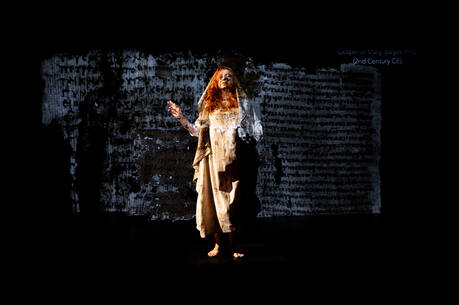An early arrival for this weekend's beatification ceremony for Oscar Romero in San Salvador has offered myself and a number of other eager pilgrims a chance to see the city before it is overwhelmed by a crowd now projected to be in the hundreds of thousands on Saturday morning. Everywhere there are reminders of Romero already, of course, and not just from the posters hanging willy-nilly, or the paintings and mosaics, or even the huge depiction of the slain archbishop at the airport that serves San Salvador.
That airport was renamed last year: Monseñor Óscar Arnulfo Romero International Airport. Can you imagine an American city renaming its airport after an archbishop? Well, I guess we do have Dulles. Much of San Salvador on a weekday is of course a seething mass of traffic jams, much like any major metropolis--and in fact the endless car horns and Spanish-language pop music blaring from countless windows reminded me more than a little of my home borough of El Bronx.
A trip with two fellow writers to San Salvador's Cathedral of the Holy Savior looked like it would prove to be an ill-fated one at 5pm; and we arrived 15 minutes after the crypt which holds Romero's tomb had been closed. A kind guard swayed by the pleas of a tearful former seminarian (look, you dance with the one that brung ya) allowed us in, however, and the traffic delay proved a blessing: the three of us were alone with the tomb. It is at moments such as this that one realizes the true genius of the Cult of the Saints, because the physical presence of Romero in his tomb inspires a kind of prayer rather different from those causes with which I usually associate Romero in my own heart: social justice; love for the poor; resistance in the face of tyranny and violence. One on one with the physical body of the one revered, however, and suddenly one's prayers are for healing for this person, clarity for that person, prompt succor for yet another, and a whole heaping pile of all of the above for myself.
The very "macro" Romero became for me in those moments a very "micro," very personal Blessed Oscar. And of course no one is alone in their version of that "micro" prayer--the heads of the four Gospel-toting angels which Italian artist Paolo Borghi placed at the four corners of Romero's tomb are now burnished from the many hands who have touched the tomb in prayer. One other striking moment--or series of moments--from today was the realization of how prominent a role religious symbols play in El Salvador's popular culture. Many of the names of streets and towns are religious in nature, of course (it is no different for us, even if we never associate St. Louis or San Francisco with their saintly patrons anymore), but cars and buses and businesses are graced with saints and savior as well. The picture above--from the side of a bus in the middle of San Salvador--is obviously so over the top that it is not typical, but nor is it particularly out of place. Similarly, our cab driver this evening had a bible on his dashboard--with his reading glasses tucked inside. This country has very different concerns from ours about the place of religion in the public square. Its largest public square, after all, will be filled with over 200,000 religious pilgrims in just about 36 hours.








